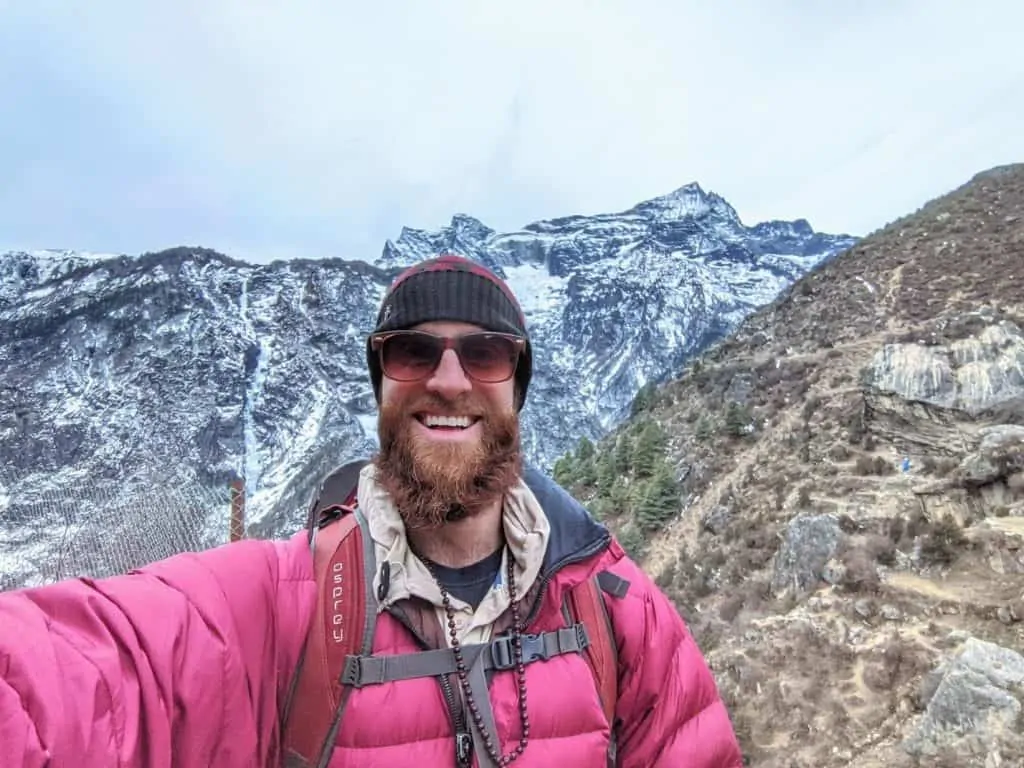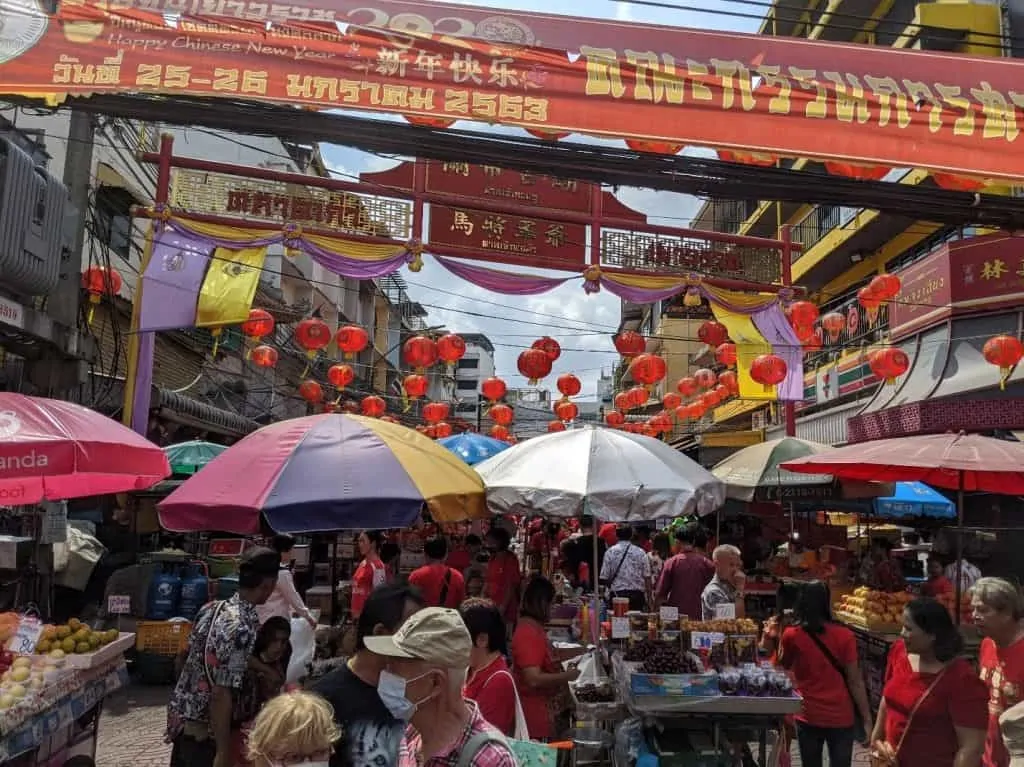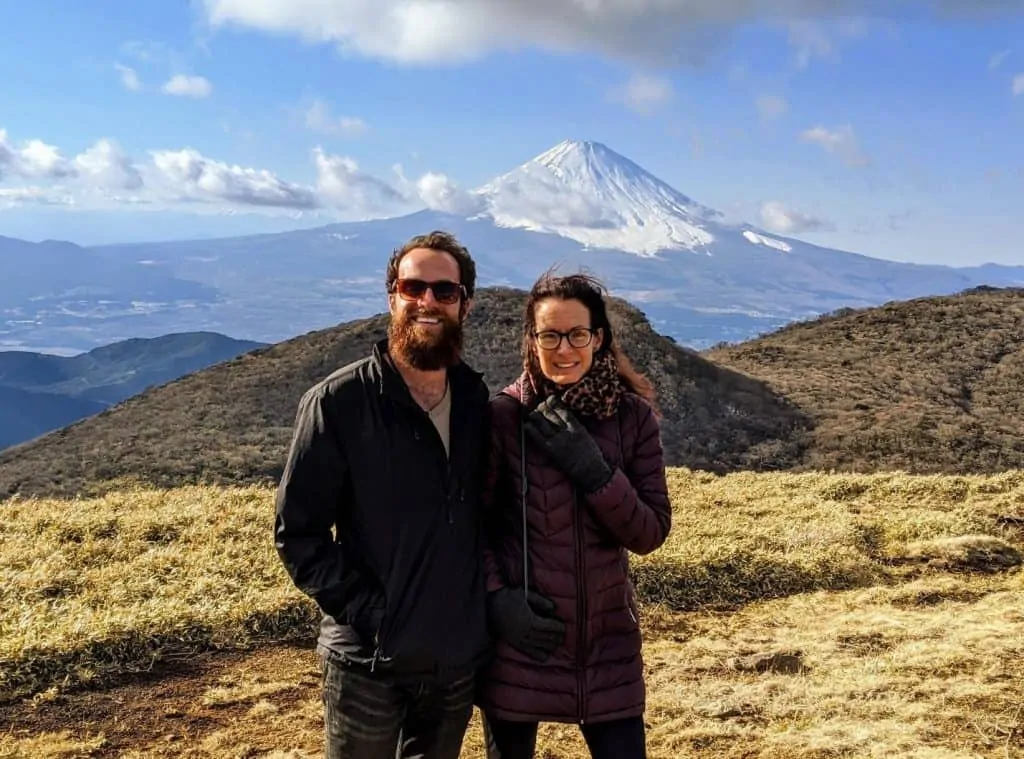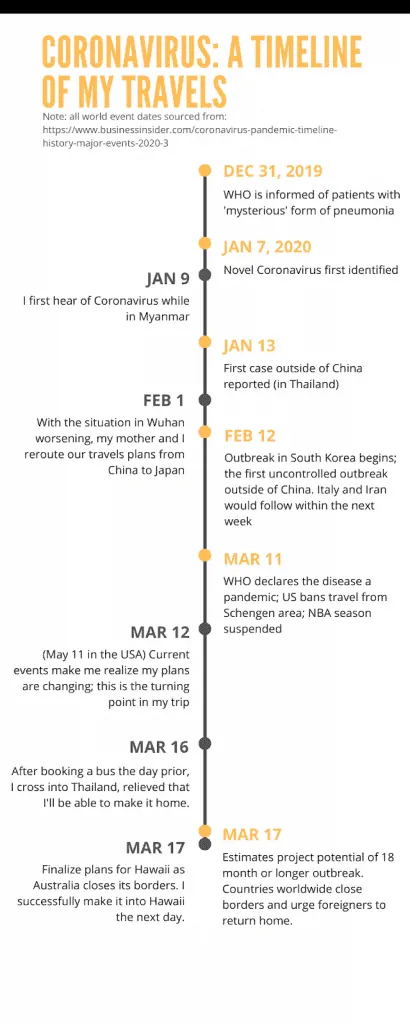I’m sitting in Honolulu, Hawaii, after over seven months of global travel.
Let me be clear: I never intended to be here at the start of my trip, nor could I have imagined it would end this way. Even two weeks ago, I didn’t see myself returning to the United States before August. And in all honesty, when things clear up with COVID-19, I plan to resume my adventures and hopefully make it to Australia before 2021 starts. But some things are bigger than a personal quest to see the world, and this current pandemic is one of those things.
Public Service Announcement
I will try to avoid being political, but I must give one quick aside. The numbers globally are staggering, and those insisting this has anything to do with the upcoming election are being nonsensical. It is a global, not American issue, and it is a pandemic, not a political ploy. This was palpably real when I was halfway across the globe, so it is narcissistic to believe this has anything to do with something as petty as American Politics. What’s happened in Italy is a cautionary tale of what happens when the exponential spread of the disease persists.
And in the United States, we’re rapidly succumbing to this pandemic; by the end of March, it would be surprising if we are not the world leader in cases. Notwithstanding pandemics like AIDS that lasted upwards of a decade, some epidemiologists are projecting that this will likely be the most fatal pandemic since the Spanish Flu. Still, ultimately through scientific breakthrough and with proper social distancing and calm, rational thought, we will get through this. So I hope everyone is taking it seriously, but still at least finding little ways to avoid Cabin Fever.
Public Service Announcement now concluded I wanted to share a side of this outbreak that I haven’t seen nor heard much: that of a long-term traveler who was almost caught abroad.
A Story Not Heard
I almost seemed to be a part of a forgotten group. Imminent trips were canceled with refunds, and those coming from compromised countries were being quarantined or outright turned away. But almost none of the warnings applied to those who had been abroad for months or even years, many without a specific home to which they could return. This is the story about how my trip evolved as the news of this disease grew from anecdotal, to relevant, to the most important factor in dictating my plans.
Business as Usual
While my travels started in August, it wasn’t until January that news of the novel coronavirus made its way to me. I had spent the prior two months on the Indian subcontinent, making my way through India, Sri Lanka, and Nepal. In December, while in Delhi, I was granted my Chinese Visa from the embassy for a planned February visit with my mom (she was to meet me there for twelve days).
At New Year’s while I was in the remote town of Namche Bazaar in Nepal, a trekker’s lodge town on the Everest Base Camp route, the first cases of what is now known as COVID-19 were being reported in Wuhan. I was well off the grid and far from the concerns of this new virus starting to take the Chinese state of Hubei by storm.

On January 7th, I flew into Yangon, Myanmar. When I arrived at my hostel, I struck up a conversation with an American girl who informed me of the new infection growing in China. Most travelers will tell you that Americans can be the most neurotic, paranoid, et. al. We can’t help it; we’ve been trained from birth that safety, equity, and security are the most essential aspects to pursue in life, so once things are out of control, we start to panic. In fact, much of this trip was learning to lose control and adapt on the fly.
Unabashedly, I brushed it off as that typical American paranoia. At worst, I was reminded of the Swine Flu or Avian Flu outbreaks of the past, but I assumed it wouldn’t become uncontained. Bill Gates would be ashamed.
For my seventeen days in Myanmar, everything was going swimmingly. Myanmar still has zero reported cases as I write this. Whether that is factual has come into question for a country that shares a long border with China. Fortuitously while there, I met a beautiful Spanish woman named Isabel, with whom I spent most of my time. Extremely intelligent, with big brown eyes and a glowing smile, Isabel was an absolute treat to share time with. We trekked, hiked mountains, explored caves, wandered temples, and toured lake villages together. But sticking to my travel plans, I had to make my way to Thailand, and as we were saying goodbye before my border crossing, things were intensifying in Wuhan.

A Minor Inconvenience
There were signs of the tumult to come, but they’re much easier to recognize in hindsight. The first indication I should have taken note of occurred while walking the Friendship Bridge from Myanmar to Thailand. After reaching the end of the bridge, we were ushered off to the side for temperature readings before going through customs to enter Thailand. But my prior experience in Africa – there, a temperature check is required at every land border to prevent the spread of Yellow Fever – told me this was nothing more than standard operating procedures.
I encountered another sign when I made it to Bangkok for the start of Chinese New Year’s. The crowds were thinner than expected due to the lack of Chinese tourists. Specifically, I should have taken particular note that public officials there for the celebration were forbidden from interacting with citizens unless they were wearing masks.
Lastly, on January 27th, I went to Chiang Mai Muay Thai Gym for some pad work in the ‘art of eight limbs.’ I had been there before, but this time to enter the gym, we had to use hand sanitizer followed by the obligatory temperature screening. Still, after a ninety-minute training session, coronavirus was the last thing on my mind.

At the time, I thought these were nothing more than precautionary. But four days later, after making my way to Pai, Thailand, coronavirus became unignorable, and the coronavirus left its first personal impact on my travels.
While in what I’ve unceremoniously referred to as ‘the backpacker’s hell that is Pai,’ the news from China was bleak and escalating. My mom and I were planning on meeting in Beijing in just ten days on February 10th, but we started to realize that wouldn’t be happening. As travel restrictions started across China, we pivoted our plans to Japan. Still, despite a bit of a headache, I personally felt invulnerable to the disease. Arrogantly, I told people I’d still be going to China if not for the travel restrictions being implemented. I swear I’ve grown smarter with age.
I had a brief two-day stop in Bangkok before I flew to Japan to meet my mom: and since it was the end of Chinese New Year, I spent my days there in Chinatown eating street food: like I said, smarter with age. But once in Japan, all seemed to be business as usual. Seeing my mom for the first time in almost six months was a superb respite from solo travels, and doing so in such a magnificent country was even better. We were told some crowds were lessened due to the fear over the novel coronavirus, but it seemed plenty lively for us.

On February 22nd, I flew from Osaka to Singapore for another reunion. Our annual travel crew was getting together again – you may remember I referenced them in my first article. Singapore was ready for this. Everywhere we went, there were hand sanitizer and mandatory temperature screenings. When we went north to Malaysia, we noticed a tangential benefit to the travel restrictions. With minimal Chinese tourists, lines were shorter, transport was more spacious, and bargains could be driven harder.

After ten days together, most of the group was back home, leaving myself, Bob, and Mary (particularly referenced in my second article) to see Kuala Lumpur and Malacca, Malaysia, for five days. There, we kept in touch with worldly current events, and outbreaks in Iran, Italy, and South Korea began. Bob and Mary were informed they would have to self-quarantine when they returned to Germany for work, but the pandemic still hadn’t hit home for most.
On March 8th, leaving Bob and Mary behind for a solo leg of the trip in Laos, I still felt as though my travels would be unaffected, and I would make it through to Australia by June as planned. And again, nothing seemed out of sorts in Laos, which suspiciously also has zero reported cases to date. I was there for four days when the ‘oh shit’ moment occurred.
Escaping Asia
I’ll never forget where I was exactly when the magnitude of this pandemic truly hit me. March 12th, after a long day of drinking and inner-tubing down the Mekong river in Vang Vieng, myself and a friend (also named Alex, from Chicago) retired to our rooms to relax. When we turned on our phones, news story after story started driving home a now-unavoidable reality.
Then the telltale moment: Rudy Gobert had tested positive for coronavirus, and the NBA would be suspending its season.
In the grand scheme of things, the NBA may seem to be extraneous, but it was a revealing measuring stick for where we were: this disease no longer was ‘contained’ to four countries, and a pandemic was about to be underway. The good news was that life was business as usual in Laos, so that allowed us to keep collected and figure out our next actions carefully.
My initial plans were to continue southeast in Laos through Vientiane and towards Pakse, to cross over into Cambodia eventually. From there, I would venture to Southern Vietnam, where I had a flight from Ho Chi Minh City, Vietnam, to Honolulu in three weeks to visit my mom. If things remained relatively controlled, I could make it there and figure out future arrangements later.
COVID-19 had other plans.

A day later, I took the bus to Vientiane, which became a pivotal point for my journey. Looking at the map of Laos, Vientiane lies centrally in latitude in the country, but also just a few minutes from the Thai border. Being there gave me comfort, which was much needed when the news struck that Vietnam and Cambodia closed their borders. Knowing Angkor Wat would have to wait, things quickly changed from imminent to drastic because it seemed likely that Thailand would be next to close their borders. If that happened before I got there, I would be functionally stranded in Laos.
After reuniting with Alex, we booked an overnight bus the following day that would take us over the border to its eventual terminus in Bangkok. Though I’ve learned to give up control and drop neurosis when it comes to travel, that was one of the tensest days of my trip. Whenever I could connect to Wi-Fi, I’d refresh the news feeds to see if Thailand was announcing new travel restrictions. Borders were closing all around us, and with the proverbial walls caving in, I felt like Indiana Jones trying to escape with the idol in Raiders of the Lost Ark.

The moment of truth came at the border crossing with the metaphoric giant boulder bearing down on us. News sites were reporting that US and UK citizens were being put under mandated two-week quarantines when entering Thailand. At the land border, we were given a health screening and a thorough review of our passport stamps. After some explanation that, despite carrying US Passports, neither of us had been to the country in over six months, the customs agents obliged and let us through. I was relieved to say the least, but I still had to figure out a destination.
The next morning having made it to Bangkok safely, I weighed options and came down to two realistic choices: move my flight to Hawaii up early and stay there, or head to Australia to start my working holiday visa in hopes of finding some temporary employment. Though I had trouble deciding at first, Australia made the choice for me when they mandated quarantine for any visitors, and closed borders to all foreigners quickly after that. And with my destinations narrowed down to one, in a city with a still-open airport, the rest was all administrative. That day I went to the airline office and changed my flight, after which I spent one last day taking in the sites of downtown Bangkok before flying out at 10:40 AM on March 18th.
One uneventful Tokyo layover later, I landed in Hawaii around 9:45 AM on March 18th (time zones are weird, right?). With my Global Entry, customs were a breeze. Would you believe it if I told you that when I landed in Hawaii that morning, I wasn’t even screened for fever nor interviewed at the airport?
So now that I’m in a comfortable place, I figured I could share some hopefully helpful lessons learned. I truly hope these are never needed again, but with population growth in an ever-increasingly global world, pandemics will happen (just as ‘Explained’ postulated months before the COVID-19 outbreak). And even if they aren’t, there could be natural disasters, political turmoil, or other unforeseen circumstances that at least require you to think on your feet. I hope the hindsight I’ve gathered below in two basic groupings can help:
LESSON ONE: BE PREPARED
Always know what hub is nearest and how to get there quickly. In southeast Asia, it’s straightforward.
Bangkok and Kuala Lumpur are the two main hubs in Southeast Asia, and knowing how to get to one saved me money, and more pertinently, time. The biggest risk that occurred while in Laos was the potential of being stuck in a country with no significant hubs. I’d have to pay for a connecting flight and likely wouldn’t be able to switch terminals if that was needed. That extra complication wouldn’t have been the biggest headache though: if stuck far from a hub and airports start closing, you may lose out on your connection possibilities. Luckily, I made it to Bangkok overland and was able to get an uncomplicated flight home.
Have a possible destination (for cheap) if sh*t hits the fan.
I’m not referring to somewhere you can stay for a month that seems remote; have a place you can stay for a minimum of 90 days. Countries may start turning back tourists, or even canceling their visas like India recently did. I was fortunate enough to have two relatively affordable options when the news worsened while in Asia: Australia and Hawaii. The two choices were a savior for me because my initial plan was to go to Australia and start my year-long visa. But when they closed borders, and the prospects of attaining employment became untenable, I audibled to Hawaii. And I know, most people won’t be fortunate enough to have a parent in a location so convenient and scenic. But be it through a working visa, or with parents, friends, or even your own place: just have somewhere you can stay for a few months if need be.
Always have an idea of your travel plans but be willing to part from them if needed.
This one particularly stung for me because Angkor Wat in Cambodia was the single site I was most excited to see on this trip. I was almost stubborn enough to push through an extra week just to see it, but unexpectedly for me, Cambodia closed their borders, ergo forcing my hand.
LESSON TWO: DON’T PANIC
- As the intensity of the outbreak grew, the least helpful kind of people I was traveling with were the attention-seekers. These people would share any rumor or inkling like it was the absolute truth. One such example was when crossing into Thailand to make my mad dash home, and I was told: “They’ll be closing the border soon, both in and out of the country, so you won’t be able to fly out anyways.” Things like this just incite panic. Don’t be that person – tread lightly and be sensible. (If you’re wondering, the worst kind of people back home were those using the word “sheeple” insisting this was nothing but a political ploy – sorry, last political jab I swear. Don’t worry. You won’t encounter many people like this while abroad.)
- Be willing to take advice and accept bad news. A LOT of fellow travelers were quite aloof to it all, myself included. But something I admired out of everyone I met was their willingness to accept things for what they were and realize they may not be able to see all that they wanted to. This goes hand-in-hand with #3 from the ‘BE PREPARED’ section. The only extra caveat I will add is that it sucks when your plans fall through. But being upset and sulking isn’t going to help you get home, and neither is being rude or pushy with travel agents or airlines. We are all in this together, so try to understand when things just aren’t meant to be.
- Be a leader: this situation is like nothing we’ve ever seen before for travelers. Backpacking and worldwide travel is a relatively new hobby. This will likely be the largest pandemic the world has seen since the Spanish Flu Outbreak, and people weren’t exactly going to places like Laos for fun back then. So nobody truly knows what to do in this situation, that much I learned. But if you can take anything of use from what I’ve learned, you can be the voice of reason if the situation ever arrives again. Even if you’re from a country whose ‘leader’ has no direction or clue, it doesn’t mean that you can’t be exactly that – sorry, I couldn’t resist just one more jab.
Unfortunately, it is now too late for total containment, so we all need to do our part. Avoid crowds, stay inside as much as possible, and follow CDC and Government guidelines. Going stir-crazy now is a small price to pay for greater global health and welfare. But I can’t state enough how uplifting it is to see trends, challenges, and any means of connection being shared across the globe over social media. We will get through this, and if we can find a silver lining, hopefully, people will learn to drop petty differences and disagreements. But when something like this occurs again, if you find yourself away from home, I hope the lessons I learned these past couple weeks can be of use.
Stay safe everyone!
Make sure to follow us on Facebook and Twitter!
If you enjoyed this, be sure to check out some of my other pieces here on Dudefluencer:
A Chance Encounter with Bali’s Mount Agung
How the Kindness of a Stranger Changed My Life
It All Started with a Whale Shark

